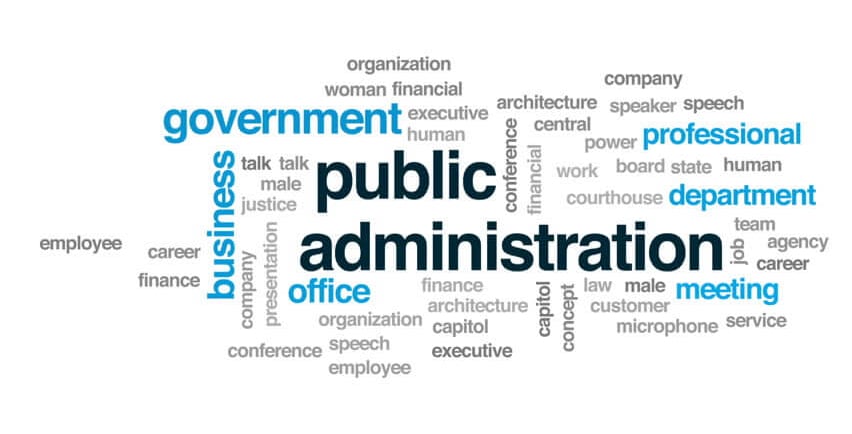UGC NET Public Administration – Mock Question Paper with Answers
UGC NET Public Administration Paper 2 – Mock Test, Check syllabus, exam pattern, books, and preparation strategy to crack the NET exam with ease.
EXAM


UGC NET Public Administration – Mock Question Paper with Answers
(Total Questions: 50, Each carries 2 marks)
Unit I: Introduction to Public Administration
Q1. Who is considered the father of Public Administration?
a) Max Weber
b) Woodrow Wilson
c) Frederick Taylor
d) Henri Fayol
Answer: b) Woodrow Wilson
Q2. The “POSDCORB” framework was given by:
a) Gulick and Urwick
b) Henry Fayol
c) Max Weber
d) Herbert Simon
Answer: a) Gulick and Urwick
Q3. Which is not a feature of New Public Administration (NPA)?
a) Relevance
b) Social equity
c) Efficiency
d) Value neutrality
Answer: d) Value neutrality
Q4. The term “Bureaucracy” was popularized by:
a) Karl Marx
b) Max Weber
c) Elton Mayo
d) Chester Barnard
Answer: b) Max Weber
Q5. “Politics-Administration Dichotomy” is associated with:
a) Frank Goodnow
b) Woodrow Wilson
c) Luther Gulick
d) Dwight Waldo
Answer: b) Woodrow Wilson
Unit II: Theories of Organization
Q6. Who propounded the Scientific Management Theory?
a) Henry Fayol
b) Frederick Taylor
c) Max Weber
d) Elton Mayo
Answer: b) Frederick Taylor
Q7. The concept of “Span of Control” was first introduced by:
a) Graicunas
b) Henry Fayol
c) Herbert Simon
d) Luther Gulick
Answer: a) Graicunas
Q8. Which is not an element of classical organization theory?
a) Hierarchy
b) Specialization
c) Informal groups
d) Division of work
Answer: c) Informal groups
Q9. Elton Mayo is associated with which experiment?
a) Hawthorne Experiments
b) Scientific Management
c) Bureaucratic Theory
d) Contingency Theory
Answer: a) Hawthorne Experiments
Q10. “Decision-making is the heart of administration” was stated by:
a) Herbert Simon
b) Max Weber
c) Gulick
d) Barnard
Answer: a) Herbert Simon
Unit III: Public Policy
Q11. The first stage in the policy cycle is:
a) Policy evaluation
b) Policy formulation
c) Agenda setting
d) Policy implementation
Answer: c) Agenda setting
Q12. Which approach sees policy as an output of the political system?
a) Institutional approach
b) Systems approach
c) Process approach
d) Group approach
Answer: b) Systems approach
Q13. Who developed the “Incremental Model” of decision-making?
a) Herbert Simon
b) Charles Lindblom
c) Yehezkel Dror
d) Harold Lasswell
Answer: b) Charles Lindblom
Q14. Public policy is different from private policy because it is:
a) Optional
b) Authoritative and binding
c) Informal
d) Secret
Answer: b) Authoritative and binding
Q15. The “Mixed Scanning Model” is associated with:
a) Lindblom
b) Etzioni
c) Weber
d) Barnard
Answer: b) Etzioni
Unit IV: Comparative and Development Administration
Q16. The term “Development Administration” was first used by:
a) Edward Weidner
b) Riggs
c) Max Weber
d) Herbert Simon
Answer: a) Edward Weidner
Q17. “Fused–Prismatic–Differentiated” model is given by:
a) Max Weber
b) Fred Riggs
c) Dwight Waldo
d) Herbert Simon
Answer: b) Fred Riggs
Q18. In Riggs’ model, “Sala” represents:
a) Traditional society
b) Transitional society
c) Modern society
d) None of the above
Answer: b) Transitional society
Q19. Development administration focuses on:
a) Law and order
b) Economic and social change
c) Political stability only
d) Cultural preservation only
Answer: b) Economic and social change
Q20. Comparative Public Administration emerged strongly after:
a) WWII
b) WWI
c) Cold War
d) American Civil War
Answer: a) WWII
Unit V: Personnel Administration
Q21. The term “Neutrality” in civil service means:
a) No political affiliations
b) Active political involvement
c) Support ruling party
d) Resign before elections
Answer: a) No political affiliations
Q22. Which country first introduced the merit system in civil service?
a) India
b) USA
c) UK
d) China
Answer: d) China
Q23. In India, the All India Services are created under:
a) Article 311
b) Article 312
c) Article 320
d) Article 323
Answer: b) Article 312
Q24. Which of the following is not a principle of personnel administration?
a) Merit-based recruitment
b) Political patronage
c) Training
d) Promotion on merit
Answer: b) Political patronage
Q25. The first Administrative Reforms Commission in India was set up in:
a) 1950
b) 1966
c) 1976
d) 1985
Answer: b) 1966
Unit VI: Financial Administration
Q26. The term “Vote on Account” refers to:
a) Approval of government accounts
b) Temporary provision for expenditure
c) Audit report
d) Budget estimate
Answer: b) Temporary provision for expenditure
Q27. In India, who is called the “Custodian of the Consolidated Fund”?
a) Prime Minister
b) Finance Minister
c) Comptroller and Auditor General
d) President
Answer: c) Comptroller and Auditor General
Q28. Which committee recommended Performance Budgeting in India?
a) 1st ARC
b) Estimates Committee
c) Public Accounts Committee
d) Finance Commission
Answer: b) Estimates Committee
Q29. The concept of Zero-Based Budgeting came from:
a) USA
b) UK
c) Japan
d) India
Answer: a) USA
Q30. Which article of the Indian Constitution deals with the Annual Financial Statement?
a) Article 110
b) Article 112
c) Article 115
d) Article 118
Answer: b) Article 112
Unit VII: Accountability and Control
Q31. The Lokpal and Lokayukta Act was passed in:
a) 2011
b) 2012
c) 2013
d) 2014
Answer: c) 2013
Q32. In India, Parliamentary control over the executive is exercised through:
a) Question Hour
b) Zero Hour
c) Parliamentary Committees
d) All of the above
Answer: d) All of the above
Q33. The CVC was given statutory status in:
a) 2003
b) 2004
c) 2005
d) 2006
Answer: a) 2003
Q34. Social audit in India was first mandated under:
a) RTI Act 2005
b) MGNREGA 2005
c) Lokpal Act 2013
d) Whistleblower Act 2014
Answer: b) MGNREGA 2005
Q35. The CAG of India is appointed by:
a) President
b) Prime Minister
c) Finance Minister
d) Parliament
Answer: a) President
Unit VIII: Administrative Thinkers
Q36. Chester Barnard is known for:
a) Human Relations Theory
b) Acceptance Theory of Authority
c) Bureaucratic Theory
d) Scientific Management
Answer: b) Acceptance Theory of Authority
Q37. Who gave the “Principles of Management” in 14 points?
a) Fayol
b) Taylor
c) Weber
d) Simon
Answer: a) Fayol
Q38. The concept of “Satisfice” is associated with:
a) Weber
b) Simon
c) Barnard
d) Gulick
Answer: b) Simon
Q39. “Administrative man” is a term coined by:
a) Weber
b) Simon
c) Fayol
d) Taylor
Answer: b) Simon
Q40. “Management by Objectives” was developed by:
a) Drucker
b) Fayol
c) Taylor
d) Weber
Answer: a) Drucker
Unit IX: Indian Administration
Q41. The Cabinet Secretariat in India is headed by:
a) President
b) Prime Minister
c) Cabinet Secretary
d) Home Minister
Answer: c) Cabinet Secretary
Q42. Which is the highest planning body in India?
a) NITI Aayog
b) Planning Commission
c) Finance Commission
d) Parliament
Answer: a) NITI Aayog
Q43. The 73rd Constitutional Amendment deals with:
a) Urban local bodies
b) Panchayati Raj
c) Cooperative societies
d) Education
Answer: b) Panchayati Raj
Q44. Who is the Chief Executive Officer of a district in India?
a) District Judge
b) District Magistrate
c) Mayor
d) MLA
Answer: b) District Magistrate
Q45. The Chief Secretary of a state is appointed by:
a) Governor
b) Chief Minister
c) President
d) Prime Minister
Answer: b) Chief Minister
Unit X: Governance and Good Governance
Q46. The concept of Good Governance was popularized by:
a) World Bank
b) UNDP
c) IMF
d) WTO
Answer: a) World Bank
Q47. RTI Act came into force in:
a) 2004
b) 2005
c) 2006
d) 2007
Answer: b) 2005
Q48. E-Governance in India was promoted through:
a) NeGP
b) Digital India
c) NIC
d) All of the above
Answer: d) All of the above
Q49. Which commission recommended Citizen’s Charters in India?
a) 1st ARC
b) 2nd ARC
c) Punchhi Commission
d) Sarkaria Commission
Answer: b) 2nd ARC
Q50. Which of the following is not a principle of good governance?
a) Transparency
b) Accountability
c) Centralization
d) Rule of law
Answer: c) Centralization
UGC NET Paper 2 Public Administration – Syllabus, Preparation Tips & Strategy
The UGC NET Public Administration Paper 2 is an important step for aspirants aiming to become Assistant Professors or secure Junior Research Fellowships (JRF) in the field of Public Administration. This paper tests in-depth subject knowledge and analytical understanding of administrative theories, policies, and practices.
In this guide, we will cover the syllabus, exam pattern, and preparation tips for UGC NET Paper 2 in Public Administration.
1. Exam Pattern for UGC NET Public Administration (Paper 2)
Mode of Exam: Online (Computer-Based Test)
Number of Questions: 100 MCQs
Total Marks: 200
Duration: 2 hours
Marking Scheme: +2 for every correct answer, no negative marking
2. UGC NET Public Administration Paper 2 Syllabus
The syllabus is divided into 10 major units:
Introduction to Public Administration
Meaning, scope, and significance
Evolution and development
Public and Private Administration
Administrative Thought
Classical, Neo-classical, and Modern Theories
Scientific Management, Bureaucratic Theory
Human Relations School
Indian Administration
Evolution of Indian Administration
Structure of Government of India
Union, State, and Local Governance
Comparative and Development Administration
Comparative Public Administration (CPA)
Riggsian Models
Development Administration
Public Policy
Policy formulation, implementation, and evaluation
Policy-making bodies in India
Public Sector Undertakings
Forms of PSU management
Disinvestment and privatization
Financial Administration
Budgeting, Audit, and Control
Fiscal Responsibility and Budget Management (FRBM)
Personnel Administration
Recruitment, Training, Promotion
Civil Services in India
Administrative Ethics
Administrative Reforms
Reform Commissions in India
Good Governance and e-Governance
Law and Order Administration
Police Administration
Disaster Management
Human Rights
3. Preparation Tips for UGC NET Public Administration Paper 2
✅ Understand the Syllabus Thoroughly – Break down each unit and create a topic-wise study plan.
✅ Refer to Standard Books –
Public Administration by M. Laxmikanth
Public Administration: Theory and Practice by Rumki Basu
IGNOU Public Administration Study Material
✅ Make Short Notes – Summarize key concepts for last-minute revision.
✅ Solve Previous Year Papers – This helps understand question trends and improve time management.
✅ Practice Mock Tests – Attempt online tests to simulate the exam environment.
✅ Focus on Current Affairs – Relating administrative concepts with recent government initiatives boosts your answers.
4. Best Books for UGC NET Public Administration
Public Administration: Concepts and Theories – Rumki Basu
Administrative Thinkers – Prasad & Prasad
Indian Administration – Rajni Goyal & Ramesh Arora
Public Administration in India – S.R. Maheshwari
5. Key Strategy to Crack UGC NET Public Administration Paper 2
Master the Basics before going into advanced topics.
Link Theory with Practice – Use real-life examples from Indian governance.
Revise Regularly – Multiple revisions help retain concepts.
Focus on High-Weightage Units – Administrative Thought, Indian Administration, and Public Policy often carry more questions.
Time Management – Divide the 2 hours efficiently between easier and tricky questions.
UGC NET Paper 2 Public Administration requires concept clarity, consistent practice, and updated knowledge of administrative trends. With a structured study plan and the right resources, cracking the exam becomes achievable.
Whether you are targeting Assistant Professorship or JRF, a disciplined approach to preparation can open doors to a rewarding academic and research career in Public Administration.
Ideagiri: Online platform for Education: Govt Colleges and Universities, Govt Jobs, Exams, Internships, Business, Finance, Technology, DigiCult and more - Ideagiri.com
Nocont@ideagiri.com
© 2025. All rights reserved.
